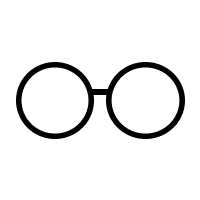New collection presentation: 'DOKA'

Geert Goiris, foto: © Rebecca Fertinel voor M Leuven
New collection presentation at M
DOKA
Ten years ago, M showed the work of photographer Geert Goiris (b. 1971). Today, he returns to the museum to curate a new collection presentation devoted to contemporary art. It is called DOKA: which is the Dutch word for darkroom, that magical place where images are created.

Geert Goiris, foto: © Rebecca Fertinel voor M Leuven
When an artist has an exhibition at M, we always see it as part of a longer-term relationship. It is no coincidence, therefore, that we have invited Geert Goiris to return as a curator. As an artist, teacher, thinker and mentor, he sits at the heart of the Belgian art world: which made us curious to discover his perspective on M’s contemporary collection.
Geert Goiris: ‘I hardly knew M’s collection, but I delved into it – first on paper, then in reality, in the art stores. Without any preconceived plan, but the more I refined my selection, the more I started to see a common thread.’
‘A major impetus was Lili Dujourie’s video from 1981, Passion de l’été pour l’hiver [Summer’s Passion for Winter]. The work lasts 15 minutes and was shot in one take. It is silent, the camera is on a tripod and the frame is fixed. You see a young woman – Dujourie herself – in a seaside apartment. She stands with her back to the camera and looks outwards. You see the sea but not the beach, as though the appartement is a kind of ship’s cabin. After a while, a dog appears on the carpet, the sunlight streams in, and the woman looks at the sea. Not much more happens, but because of the confined space and the minimal action, the slightest change stands out and you notice multiple details. Just the way she portrays herself. Self-conscious, sensual almost, but at the same time, unassuming. The opposite of the selfies we take and share en masse these days.’
‘As you let the work come to you, you are absorbed in a field of tension. Between the intimate interior space and the unreachable horizon, between looking and being looked at. This is also indicated in the title: it is summer, when everyone wants to go outside, but she longs for winter, when we like staying indoors.’
‘Alongside Passion, I have selected four other videos by Lili Dujourie. In all these works, she explores the boundaries of the familiar, things that are reassuring. She seeks out the margins, the edges, the seams of our existence. I like to do that myself in my own work.’
‘That quest for boundaries, and the desire to transgress them, was the starting point for the collection presentation. It spans five rooms and is clearly structured. Visitors can follow the route in either direction, but I prefer them to go from ‘inside’ to ‘outside’, so to speak. The works in the first, large room evoke enclosed, almost claustrophobic interiors. In each subsequent room, you take a step further towards the outside. It only occurred to me later, but perhaps the influence of the lockdown also makes itself felt, albeit subconsciously, for this was also a time when we longed to be outside but couldn’t.’

© Rebecca Fertinel voor M Leuven
The source of all devotion
‘That movement from inside to outside also involves going from the familiar to the unknown, from control to curiosity. This is strongly reflected in the work of René Heyvaert, to whom M devoted a solo exhibition in 2018-19. He decontextualises everyday utensils and strips them of their functionality. He ties a fork to a stick with a piece of string. He cuts up wallpaper into geometric patterns. We often see what we expect to see; Heyvaert masterfully succeeds, with utterly minimal interventions, in making you take a second, unbiased look.’
‘While preparing DOKA, I was reminded of a line of poetry by Mary Oliver: “Attention is the beginning of devotion”. I like to think of DOKA as a manual for focusing your attention. Furthermore, I prefer not to over-interpret the works on display. The more you know, the less you sometimes see. Suspend your judgement and just look. Anyone can look.’
‘Looking closely can also help you become more critical. Take Kleurboek voor volwassenen [Colouring book for adults] by Jef Geys: a collage of clippings from the Yellow Pages and prints of sports cars and utensils but also soldiers. An implicit critique of consumer society: Geys shows the formatted manner in which this reaches us, and almost literally forces us to colour within the lines.’
The darkroom is where images are created through the interaction of light and chemistry – a magical process. That is also how I see this collection presentation: works that have been in a dark storeroom for years are now suddenly coming to light.
Between humour and hell
‘The exhibition becomes more and more outward-looking with each successive room. Only: can we ever actually penetrate the outside world? Ria Pacquée raises that question in the series of photographs documenting her performance It Carrying the Inferno. You see an inconspicuous, androgynous figure – ‘It’ – in various spots around the city, surrounded by people, yet with little to no actual contact. They hold an orb – “the inferno”, according to the title.’
‘I see the last room as a garden: an enclosed, ordered’ space that is simultaneously imbued with the desire for wide, open terrains. Here we show, among other things, Labyrinths and Pleasure Gardens, a series of garden designs by Jan Vercruysse. They are replete with sexual allusions – at least, that’s what I see in them (laughs). Humour is a recurrent theme in DOKA, because we don’t want the visitors to go home feeling depressed. Take Mer [Sea], for example, a sound piece by Ann Veronica Janssens in which you hear a child’s laughter. It’s infectious: when I listened to it in the storerooms, I was chuckling under my headphones.’
Out of the dark
‘When the selection was more or less complete, the doubt set in again. Something was missing, but I didn’t know what. A friend pointed out to me that I was looking too much as a curator and not enough as a photographer. That’s how I arrived at the darkroom – the DOKA from the title. I spent years developing photographs in a darkroom. This is where images are created through the interaction of light and chemistry – a magical process. That is also how I see this collection presentation: works that have been in a dark storeroom for years are now suddenly coming to light. I want to extend this idea further into the galleries at a later date. But anyone who wants to know what that’s like will have to come to M.’

‘Passion de l’été pour l’hiver’ still, Lili Dujourie, 1981, Cera-collection with M Leuven © the artist & Argos Centre for Audiovisual Arts





